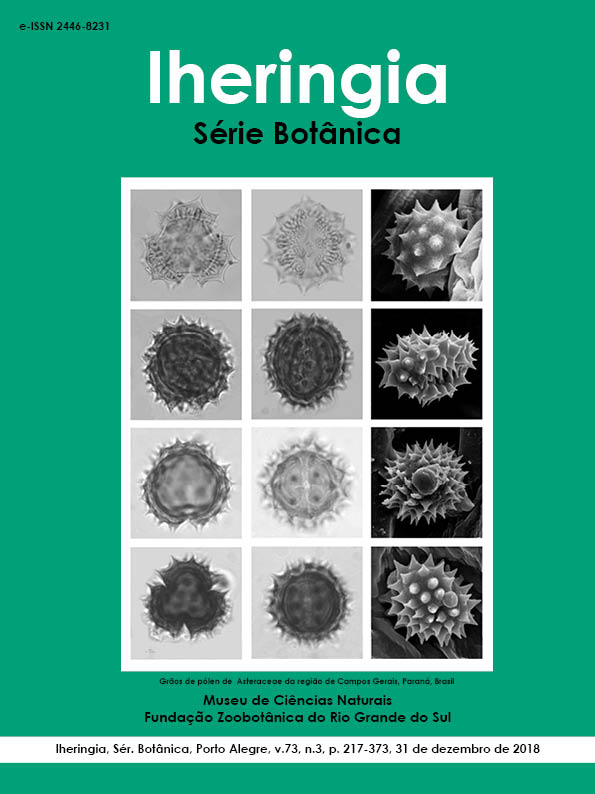Leaf morphology and anatomy of <i>Jacquinia armillaris</i> Jacq. (Primulaceae) from two coastal Restinga environments
DOI:
https://doi.org/10.21826/2446-8231201873303Palavras-chave:
trichome, post-beach formation, rocky outcropsResumo
Jacquinia armillaris occurs in post-beach and rocky outcrops environments, which led to hypothesize that they are morphological and anatomical plasticity in its leaves to inhabit these two coastal formations. Anatomical, histochemical and micromorphometric analyzes were performed to understand the leaf plasticity. The leaf lamina is dorsiventral and hypostomatic, with glandular trichomes. The epidermis is uniseriate, possesses anomocytic stomata and is covered by a thick cuticle and epicuticular wax. The post-beach formation plants had the higher stomatal index and greater stomatal density, however, there are higher leaf size and glandular trichomes density in the rocky outcrop plants. The glandular trichomes are similar in structure to salt glands and may serve to reduce the impact of the local salinity. At first, the two environments present typical coastal environmental conditions, however, specific local characteristics were sufficient to trigger anatomic and morphologic plasticity, particularly associated with the distribution of stomata and leaf size.Downloads
Não há dados estatísticos.
Downloads
Publicado
2019-01-31
Como Citar
Kuster, V. C., Silva, L. C. da, Possatti, L., & Schneider, S. Z. (2019). Leaf morphology and anatomy of <i>Jacquinia armillaris</i> Jacq. (Primulaceae) from two coastal Restinga environments. Iheringia, Série Botânica., 73(3), 240–249. https://doi.org/10.21826/2446-8231201873303
Edição
Secção
Artigos







